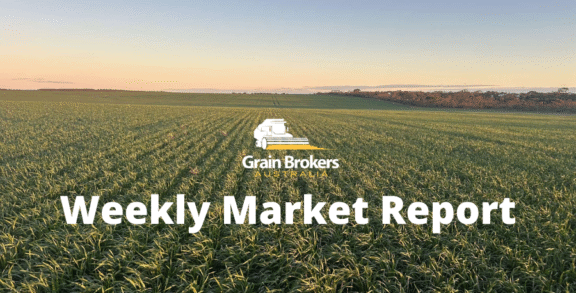
Will the deal be Don or will pigs fly?
No matter what news source you read, watch or listen to at the moment, China seems to be dominating the daily news cycle, particularly in the rural commodity sphere.
All the talk in agriculture circles late last week was around progress in the China-United States (US) trade deal. Last week’s negotiations went so well that they have been extended across the weekend and work has reportedly commenced on a draft memorandum of understanding (MoU) that will finally put an end to Don’s Party (China-US trade war).
The US and China have been desperate to finalise a deal before March 1, when additional US tariffs are scheduled to be introduced. US President Donald Trump announced on Monday of this week that “As a result of these very productive talks, I will be delaying the US increase in tariffs now scheduled for March 1”. He went on to say that “assuming both sides make additional progress, we will be planning a summit for President Xi and myself to conclude an agreement”.
China is reportedly proposing to buy an “additional” US$30 billion worth of US agricultural produce per year. These purchases would be on top of pre-trade war levels and would continue for the period covered by the MoU. The major bulk export commodities such as soybeans, corn and wheat would be included.
To put this in perspective, in 2017 Chinese agricultural imports totalled US$125 billion. Imports of US farm products in the same year were more than US$24 billion, or 19 per cent of the total. Bulk commodities made up almost US$15 billion, with soybeans accounting for just under US$12.5 billion. Wheat, corn and sorghum made up most of the balance. In 2018, the value of US farm produce exports to China fell by a third, to US$16 billion, as a result of the trade conflict.
Using last Friday’s futures close, the current value of projected US ending stocks for soybeans, corn and wheat were US$8 billion, US$6 billion and US$5 billion respectively. In other words, China could buy the sum total of US ending stocks for these three commodities and still have US$11 billion left over to splurge on other US agricultural produce such as meat, cotton, dried distiller’s grains (DDGs), ethanol, seafood and sorghum.
The MoU under discussion is also believed to cover areas such as intellectual property, non-tariff barriers, technology transfer, telecommunications and services. However, the verification and enforcement mechanisms remain unclear. If past actions are any indication of future behaviour, I have no doubt that President Trump would be threatening to reimpose tariffs if the conditions of the MoU are not met.
The potential impact of such a deal on the US farm sector and US agricultural markets could be huge, as long as the agreement also includes measures to stabilise currency values. US negotiators have been seeking China’s agreement to decrease manipulation of the value of the yuan to gain a trade advantage.
If China does agree to purchase an additional US$30 billion of US agricultural products each year, this is much more than the year-on-year increase in demand. There will almost certainly be collateral damage as a result, most likely the Chinese farmer and other agricultural commodity trading partners, Australia key amongst them.
Early last week the Chinese government outlined its latest rural policy. At its heart are three primary goals: improving rural incomes, improving rural living standards and supporting domestic agricultural production. But agricultural production systems in China are relatively inefficient, primarily due to scale and the tyranny of distance.
In a scenario familiar to many farmers across the globe, Chinese farm incomes have been under threat from rising input costs, rising labour costs, rising freight costs, large inventories and competition for cheaper imports.
The rural policy outlined plans to increase soybean production while stabilising wheat and corn production. In other words, they are aiming to increase total farm productivity. If imports of US soybeans increase in conjunction with rising domestic production, then imports from other global trade partners such as Brazil and Argentina will have to decrease. Ironically, Brazil has been one of the biggest beneficiaries of the recent trade war.
China has long been a traditional market for Australian cereal grains such as barley, wheat and sorghum. While not in the same volumes as soybeans, any decrease in demand for Australian agricultural produce from mainland China will undoubtedly have an impact on competition for Australian exports, and potentially on farm gate returns.
The ongoing barley anti-dumping investigation by China is a complicating factor. Australian barley exporters are waiting in trepidation of a Chinese government ruling that may close the gate on Australia’s biggest barley market. Rumours were circulating late last week that an announcement would be made sometime this week and that it would be quite prohibitive.
Market sources suggest that any trade restriction will take the form of a deposit paid to Chinese authorities to allow the cargoes to enter the country. This deposit will be returned to the remitter if the governmental investigations do not implement prosecutions against Australian barley exporters. A comparable deposit scheme on US sorghum imports last year effectively closed the door to US sellers and foreshadowed an official tariff.
There are a number of Australian barley cargoes currently discharging at Chinese ports, more shipments on the water and the export stem still has barley vessels yet to load with China as the nominated destination. I suspect that the respective exporters will be having a few sleepless nights ahead of the announcement, whenever it may be.
Peter McMeekin is a consultant to Grain Brokers Australia. Call 1300 946 544 to discuss your grain marketing needs.





